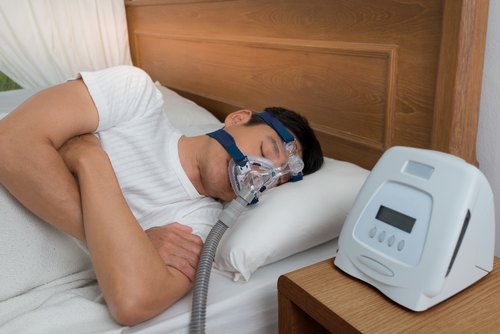Snoring
Snoring is noisy breathing while sleeping. It occurs when air flows past relaxed tissues in your throat, causing the tissues to vibrate as you breathe.
Not only is snoring a nuisance, but some people who snore may develop obstructive sleep apnea (when breathing is disrupted during sleep for short periods). Obstructive sleep apnea occurs when the muscles that support the soft tissues in the throat, such as large tongue and soft palate, temporarily relax. When these muscles relax, airway is narrowed or closed, and breathing is momentarily cut off. This is a warning sign for plethora of diseases including heart related conditions.

Symptoms
- Snoring
- Daytime sleepiness or fatigue.
- Restlessness during sleep, frequent nighttime awakenings.
- Sudden awakenings with a sensation of gasping or choking.
- Dry mouth or sore throat upon awakening.
- Cognitive impairment, such as trouble concentrating, forgetfulness or irritability.
- Mood disturbances (depression or anxiety).
- Night sweats.
- Frequent nighttime urination.
- Sexual dysfunction
- Headaches
Diagnosis
It needs to be evaluated in a proper way by the means of sleep study done in the hands of experts.
It needs to be evaluated in a proper way by the means of sleep study done in the hands of experts.
Treatment
Conservative
Weight Loss – Weight of a person has a significant effect on his fat deposition in and around neck. Studies have shown even a 10% weight loss may have a significant benefit.
MedicalIf such symptoms are because of nose problems – like rhinitis/sinusitis/allergy. It can be treated medically also.
Mechanical Therapy
Positive Airway Pressure (PAP) therapy is also used for people with obstructive sleep apnea. In PAP therapy, patients wear a mask over their nose and/or mouth. An air blower gently forces air through the nose and/or mouth. The air pressure is adjusted so that it is just enough to prevent the upper airway tissues from collapsing during sleep. It is a support therapy, airways may collapse if the device is used improperly or pressure requirement increases.
Surgical Treatment
It works on the principle of creating space mechanically for breathing. All the redundant soft tissue/nasal bone posing obstruction to breathing is cleared, so as to give relief to patient.
- Nasal surgery includes correction of nasal obstructions, such as a deviated septum.
- Tonsillectomy is a procedure that removes the tonsillar tissue in the back of the throat along with adenoids hypertrophy, which is a common cause of obstruction in children with sleep apnea.
- Uvulopalatopharyngoplasty (UPPP) is a procedure that removes soft tissue on the back of the throat and palate, increasing the width of the airway at the throat opening.
- Coblation Assisted Surgeries – Coblation method has taken the snoring surgeries to a next level. With such technology we can even remove a part of epiglottis, tongue base, gloosoepiglottopexy, UPPP with ease, trying to give the symptomatic relief to patient.
